Chris Hedges's Blog, page 92
November 28, 2019
Now Is Not the Time for Democrats to Waver
As the House Judiciary Committee opens the final round of hearings next week in the impeachment investigation of Donald Trump, there are, once again, reports of wavering among centrists and moderates in the Democratic Party. Although conservative news outlets have taken the lead on such reporting, there is little reason to believe the coverage is fake or exaggerated.
According to a Nov. 22 report published by Politico, “vulnerable Democrats” who represent swing districts that turned blue in 2018 “are watching in horror” as GOP-aligned interest groups flood their radio and television markets with anti-impeachment ads. The Politico article identified several swing-district moderates as coming under particularly aggressive Republican fire, including Anthony Brindisi of New York, Joe Cunningham of South Carolina, Ben McAdams of Utah, Elissa Slotkin of Michigan and Xochitl Torres Small of New Mexico.
A Nov. 26 Fox News story on Michigan Rep. Brenda Lawrence went even further, noting that Lawrence, who represents a relatively safe district and who previously backed the impeachment inquiry, apparently abandoned the cause in a recent interview on a Michigan radio program. “We are so close to an election,” Lawrence said. “I will tell you, sitting here knowing how divided this country is, I don’t see the value of taking him out of office.” Instead of impeaching Trump, Lawrence suggested the House censure the president and move on to other business.
Related Articles

Noam Chomsky: Democrats Are Failing the Test of Our Time
by Ilana Novick
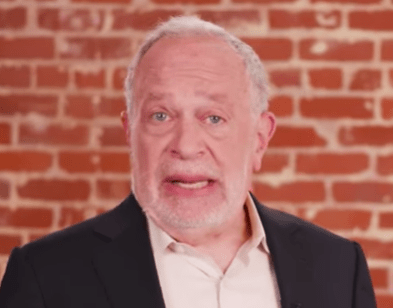
Robert Reich: Democrats Reject Oligarchy or Else
by Robert Reich
At the heart of the anxiety expressed by Lawrence and others is the lingering question of whether impeachment is worth the effort as long as it remains unlikely that the Republican-controlled Senate will vote to convict Trump of a single article of impeachment, no matter how strong the evidence against him.
I understand the concerns. They’re similar to those lawyers sometimes discuss with clients who want to file valid but costly and uncertain lawsuits. Sometimes, the best advice is to exercise caution and avoid litigation.
The Trump impeachment, however, isn’t one of those occasions, and the time for dithering and weak knees has long passed.
As Alexander Hamilton instructed during the founding era in Federalist (Paper) No. 65, impeachment is the remedy prescribed by the Constitution for holding presidents to account for the most serious abuses of power, corruption and “violations of the public trust.”
No American president—not even Richard Nixon—has done more to violate the public trust, and thus deserve impeachment, than Trump. The Ukraine-bribery conspiracy is only the tip of our 45th commander in chief’s iceberg of malfeasance. A complete laundry list of Trump’s “high crimes and misdemeanors” would no doubt extend well beyond Ukraine and warrant citing Trump for:
Using the presidency for personal economic gain;
Committing campaign finance violations by paying hush money to Karen McDougal and adult film star Stormy Daniels;
Obstructing justice in connection with the investigation by special counsel Robert Mueller;
Abusing the pardon power to reward political allies;
Abusing emergency powers to build his border wall;
Incarcerating undocumented immigrant children in prison settings;
Attempting to strip millions of Americans of health insurance;
Promoting tax reform to benefit the superrich;
Gutting environmental regulations and pulling out of the Paris Climate Accord;
Refusing to enforce the Voting Rights Act and promoting an ideology of white supremacy.
Clearly, wavering Democrats need a shot of courage. Looking at history, they can find that courage in several sources, starting, most prominently, with the Nixon impeachment investigation.
Unlike Trump, Nixon was a genuinely popular chief executive. He won reelection in 1972 with 60.7% of the popular vote, prevailing in 49 states. His downfall, even after the initial revelations of the Watergate burglary and the protracted televised coverage of the ensuing cover-up by the Senate Select Committee on Presidential Campaign Activities in 1973, seemed utterly improbable. Nonetheless, he fell.
Nixon’s denouement, however, was slow and painful. Public support for his impeachment and removal from office didn’t crest above 50% until late July 1974, after the Supreme Court ruled that he had to turn over secretly recorded White House audio tapes on Watergate to special prosecutor Leon Jaworski. By August, the tide had fully turned, and on Aug. 8, 1974, Nixon announced he would resign from office rather than face formal impeachment in the House and near-certain removal by the Senate.
By contrast, public support for Trump’s impeachment and removal already stands at 50%. Depending on how skillfully the case is presented in Trump’s Senate impeachment trial, that support is likely to rise substantially, weakening the president’s reelection prospects even if GOP senators turn their backs on the evidence and vote to acquit him.
I addressed the issue of Democratic resolve during a wide-ranging and lengthy panel discussion that aired at the end of the Pacifica Radio Network’s simulcast of the first day of the House Intelligence Committee’s public impeachment hearings on Nov. 13. I recommend the discussion to anyone looking for more than the usual cable news fodder on impeachment.
In addition to citing Nixon on the broadcast as a source of inspiration for those worried about losing a Trump impeachment trial in the Senate, I mentioned the case of Emmett Till, the 14-year-old black teenager who was kidnapped, mutilated and murdered in Mississippi in 1955 for whistling at and flirting with a white woman.
Two white men were charged by a Tallahatchie County grand jury with killing Till. But despite the overwhelming evidence of guilt presented by a courageous and decent local district attorney named Gerald Chatham, the defendants were acquitted by an all-white, all-male jury that deliberated for a mere 68 minutes. The verdict, though outrageous, surprised no one. The defendants were never made to pay for their crimes, but their acquittal became a catalyst for later advances in the civil rights movement.
Invoking the legacy of Till on the Pacifica Radio Network program, I asked if the 1955 murder prosecution should have gone forward, in light of the small odds of a conviction. The answer, everyone on the panel agreed, was yes.
Impeachment is not a legal proceeding, but a hybrid of law and politics. But the case of Emmett Till stands for a proposition that applies in both settings: Sometimes principle must prevail over pragmatism. The road to justice is rocky, but it must be traversed.
No matter what happens in the Senate, the Trump impeachment should and must move forward.

November 27, 2019
China Furious as Trump Signs Hong Kong Bills
BEIJING — The Latest on President Donald Trump’s signing bills supporting pro-democracy activists in Hong Kong (all times local):
10:15 a.m.
China has reacted furiously to President Donald Trump’s signing of bills on Hong Kong human rights and says the U.S. will bear the unspecified consequences.
A foreign ministry statement Thursday repeated heated condemnations of the law and says China will counteract. It says all the people of Hong Kong and China oppose the move.
It’s still unclear, however, how China will respond exactly.
___
7:45 a.m.
President Donald Trump has signed two bills aimed at supporting human rights and pro-democracy activists in Hong Kong.
The bills were approved last week by near unanimous consent in the House and Senate.
Still, Trump is expressing some concerns about complicating the effort to work out a trade deal with China’s President Xi Jinping.
He says he “signed these bills out of respect for President Xi, China, and the people of Hong Kong.”
He adds that he hopes “Leaders and Representatives of China and Hong Kong will be able to amicably settle their differences leading to long term peace and prosperity for all.”
China has threatened to take unspecified, “strong countermeasures” if the bills are signed into law.

The DNC Refuses to Take Climate Change Seriously
As the Democratic Party prepared for its first presidential primary debates in June, climate activists pushed the DNC to schedule a single-issue debate on the climate crisis, given the urgency of the problem and the lack of attention given to it in previous debates. DNC chair Tom Perez refused, saying he had “the utmost confidence” that climate disruption would be discussed in the debates “early and often” (FAIR.org, 6/18/19).
Now that seven nights of debates have passed, and multiple media outlets have been given a chance to decide how early and often each issue is discussed, how accurate has Perez turned out to be? Pretty much dead wrong.
Across all the debates thus far, questions on the climate crisis have accounted for 7% of all questions, or 1 in every 14. (In raw numbers, it’s 47 out of 638.) And last week’s MSNBC debate was the first in which climate made it into the first hour of questioning—slipping in at the 59-minute mark. It has never been the lead question in a debate.
It’s not just climate activists that want to hear the environment discussed in the debates—it’s the public. Polls consistently show climate ranked among Democratic voters’ top concerns, and one that they want to see discussed more in debates. The New York Times asked readers what they wanted to hear about both before and after the debate they co-hosted; climate topped the list both times. But during the debate, the Times hosts (and their CNN counterparts) didn’t ask a single question about it (FAIR.org, 10/17/19).
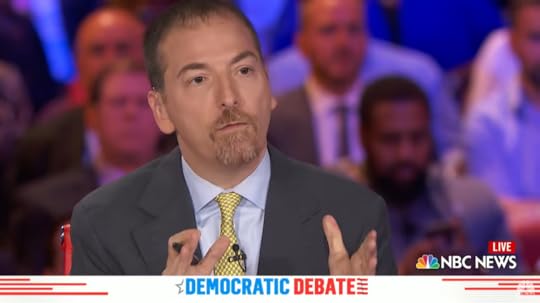
NBC‘s Chuck Todd (6/26/19)
FAIR’s accounting counts hand-off prompts (such as, “Senator, your response?”) as questions, since we’re interested in who’s being given the chance to speak on which topics. If you only count unique questions on climate, 20 have been asked across all debates.
Some have been useless, being too broad (“Explain specifically what your [climate proposal] is”—NBC‘s Chuck Todd, 6/27/19) or too convoluted (“Who pays for the mitigation to climate, whether it’s building seawalls, for people that are perhaps living in places that they shouldn’t be living? Is this a federal government issue that needs to do that. Do they have to move these people? What do you do about that, where maybe they’re building a house someplace that is it safe? Who pays to build that house, and how much should the government be bailing them out?”—Todd again, 6/26/19). Many have focused on the idea that major climate action is not “realistic,” or that it threatens people’s freedoms to do things like drive gas-guzzling cars or eat meat.
Bernie Sanders, who has pivoted hard toward the climate issue in recent weeks, has been given the most speaking prompts on climate—but not a single unique question. Elizabeth Warren and Cory Booker, the only other candidates appearing in every debate who have received higher than a B+ grade from Greenpeace on their climate plans, have gotten one unique question each. Hand-off prompts, under the rules enforced by the media hosts, are generally limited to either 30 or 45 seconds, which means that the candidates with the most ambitious climate plans have been given criminally little time to explain them.

Debate moderators do not act like they live on a planet where “rapid, unprecedented cuts in greenhouse gas emissions” are necessary to avoid “widespread, catastrophic effects” (Washington Post, 11/26/19).
Perez may point in his defense to the climate town halls hosted by CNN (9/4/19) and MSNBC (9/19/19, 9/20/19), which did force candidates to speak in more detail about their plans—but, as we noted at the time, those forums get a fraction of the viewership and follow-up coverage that debates get (FAIR.org, 9/6/19). If anything, it seems the events gave media hosts a pass to minimize climate in subsequent debates, as CNN did in the debate they co-hosted after the town halls (FAIR.org, 10/17/19).
While media report on a “bleak” new UN report that finds, in the words of a Washington Post reporter (11/26/19), “rapid, unprecedented cuts in greenhouse gas emissions offer the only hope of averting an ever-intensifying cascade of consequences,” you can’t help but be struck by how blithely they undercut such reporting by minimizing the climate problem in the public forums that are expressly designed to help determine who might lead our country for the next four years.

Extinction Rebellion Celebrates Dropped Charges Against 105 Activists
Extinction Rebellion and its supporters celebrated Wednesday after the agency that conducts criminal prosecutions in England dropped charges against 105 activists who were arrested in London last month for participating in the environmental movement’s “Autumn Uprising” actions.
The Crown Prosecution Service’s (CPS) decision to end the cases against Extinction Rebellion (XR) activists came after a high court in the U.K. ruled early this month that a protest ban imposed by London’s Metropolitan Police Service (MPS) under section 14 of the Public Order Act was unlawful.
“It is to be hoped that the police will, in future, take much greater care to act within the law and to balance the right to protest with their desire for public order,” Martin Marston-Paterson, one of the XR activists arrested under the section 14 order in October, said in a statement.
“Extinction Rebellion is glad to see that the Met Police and the CPS have recognized the implications of our successful challenge earlier this month,” said Tobias Garnett, a human rights lawyer in the movement’s legal strategy team. “It underlines the need for proper policing that doesn’t waste precious public resources.”
These admissions of unlawful arrest, said Garnett, “affirm that when the people of this country assemble peacefully to demand action on the climate and ecological emergency the law is on our side.”
Criminal charges have been dropped against Extinction Rebellion activists arrested during a London-wide protest ban.
The CPS said 105 cases were being discontinued against #ExtinctionRebellion supporters who were detained during the action in October.
Americans Must Choose Between Life and Death in 2020
If you’re following the presidential race, you’ve heard plenty of sniping about Medicare for All and whether we can afford it. But when it comes to endless war or endless profits for Pentagon contractors, we’re told we simply must afford it — no questions asked.
According to one study, even if universal health insurance didn’t bring health care prices down — an unlikely worst-case scenario — we’d need an extra $300 billion a year beyond our current spending to provide full insurance for everyone.
Where can we find it? In a giant pot of money that’s already rampant with waste and abuse: the Pentagon.
Right now, only about one quarter of the $738 billion Pentagon budget goes to our troops. The rest is mainly three things: the cost of maintaining 800 military installations all over the world; lucrative Pentagon contracts, which account for nearly half of the entire Pentagon budget; and, of course, our never-ending wars in the Middle East.
According to my research, if we end those wars, shut down wasteful and failing weapons programs, and close unnecessary foreign bases, we could come up with an extra $350 billion to spend on Medicare for All — without sacrificing security.
As experts of various political stripes will tell you, the U.S. military is carrying out a costly 20th-century security vision in a 21st century world. For instance, the Pentagon still keeps tens of thousands of troops in Germany and Italy. Maybe 75 years after the end of World War II (and nearly 20 years into our ill-fated Iraq adventure) is a good time to finally bring those troops home?
Closing 60 percent of our foreign bases would save $90 billion a year. There’d be enough left over for more than one foreign military installation in each country on earth, if we insisted.
Right now, those bases enable our endless wars. Troops rotate from Germany into the Middle East and Africa, and tens of thousands are stationed in the conflict-ridden Middle East at any given time. Yet our wars have only further destabilized the region. It’s time we brought our troops home for good — and saved $66 billion each year in the bargain
Then there are those highly paid contractors. For instance, the F-35 fighter jet is projected to cost more than the entire military budget of Iran. But even after many years and massive cost overruns, the lead Pentagon tester just reported that the F-35 is still “breaking more often than planned and taking longer to fix.”
We should halt the F-35 boondoggle, cut back on 20th century war technology like the aircraft carrier, and freeze nuclear weapons spending, with the eventual goal of eliminating these weapons that could wipe us all out at a keystroke.
All told, we could cut $100 billion from outdated, ill-conceived, or outright dangerous programs like these. The contractors will howl, but they’ve run things long enough.
None of this is as radical as it sounds. Today, military spending is higher than it was at the peak of the Vietnam War. Even with a $350 billion cut, it would simply return to levels from the late 1990s.
Together with common-sense cuts to runaway overhead costs, and by rolling current Pentagon health care costs into a universal health plan, we easily get more than the $300 billion needed for Medicare for All.
Which would make us safer: Medicare for All or endless wars? The choice is ours.

Indigenous Resistance Might Just Save Our Lives
Thanksgiving is one of the great foundational myths of the United States, turning a single gathering of indigenous people in Massachusetts with English settler colonists in 1621 into one of the greatest whitewashes of genocide in world history. Even by that time, native people throughout the Western hemisphere had already suffered horrific violence for over a century, at the hands of Christopher Columbus and other European explorers intent on enslaving native people and exploiting the region’s vast resources. Thanksgiving has morphed into an event celebrating family, feasting and football, a day off before the commercial onslaught of holiday shopping (although the “Black Friday” sales frenzy has intruded on Thanksgiving Day as well). On this Thanksgiving holiday, we should reflect on our true history, and on the remarkable, ongoing indigenous resistance to colonization.
Not long after that mythic first Thanksgiving, colonists flocked to New England, numbering over 1,000 in 1630 and more than 10,000 by 1640. Rapacious demand for land and resources led to The Pequot War in 1636, when hundreds of native people were massacred by colonial militias, followed by King Philip’s War in 1675, when an estimated 3,000 native people were killed.
One of the earliest proclamations defining the holiday of Thanksgiving, made by Massachusetts Bay Governor William Dummer in 1723, thanked God for allowing them “to Defeat in some Measure the repeated Attempts of the Indian Enemy against us, and to defend so many of our frontier Plantations from their Rage & Fury.” Similar racist language appeared just over 50 years later, in the Declaration of Independence, condemning “the merciless Indian Savages.”
Related Articles

The 500-Year-Long Battle to Save the Planet
by

What Does It Mean to Be a Native American?
by

Americans Can't Decolonize Their Holidays Soon Enough
by
The genocide proceeded, from the forced displacement of Cherokee and other native nations in what is remembered as the Trail of Tears, to the relentless westward expansion under the racist Manifest Destiny doctrine, the imposition of the reservation system, followed by Indian boarding schools that separated native children from their families, forbidding them from speaking their native languages and forcing assimilation, often under criminally abusive conditions. Treaties were made by successive presidents and always broken. As Oglala Lakota leader Red Cloud said, “They made us many promises, more than I can remember, but they kept only one; they promised to take our land, and they did.”
In the fall of 1969, a group of Native American activists occupied the abandoned federal prison on Alcatraz Island in San Francisco Bay. Their manifesto used sarcasm, demanding the federal government hand over Alcatraz because it possessed all the qualities of a Native American reservation:
“1. It is isolated from modern facilities, and without adequate means of transportation.
“2. It has no fresh running water.
“3. It has inadequate sanitation facilities.
“4. There are no oil or mineral rights.
“5. There is no industry and so unemployment is very great.
“6. There are no health-care facilities.
“7. The soil is rocky and nonproductive, and the land does not support game.
“8. There are no educational facilities.
“9. The population has always exceeded the land base.
“10. The population has always been held as prisoners and kept dependent upon others.”
The 19-month occupation involved thousands of people and inspired indigenous people across North America to demand justice. The American Indian Movement was founded, leading to the 1973 activist occupation of the town of Wounded Knee on the Pine Ridge Reservation in South Dakota, galvanizing international solidarity for indigenous rights.
On Thanksgiving Day 1970, members of the Wampanoag tribe organized the first National Day of Mourning in Plymouth, Massachusetts, with a march, vigil and fast. The event now nears its 50th anniversary, as “a day of remembrance and spiritual connection as well as a protest of the racism and oppression which Native Americans continue to experience.”
The youth of that era, now elders, joined thousands of indigenous young water protectors at the Standing Rock Sioux Reservation in North Dakota in 2016, to oppose construction of the Dakota Access Pipeline. Among those young activists was historian Nick Estes of the Lower Brule Sioux Tribe. Estes, speaking on the Democracy Now! news hour, recalled Thanksgiving 2016:
“We led a prayer march in the Bismarck, North Dakota, mall to bring attention to the Standing Rock struggle during a Black Friday shopping event, which was met by police armed with AR-15s, who then began punching and kicking water protectors who were holding a prayer. It was a really jarring contrast between the past and the present … between the massacre of Pequots in Massachusetts to the contemporary fight against an oil pipeline.”
Now, almost 400 years since that first, mythic Thanksgiving, indigenous people are at the forefront of the fight against catastrophic climate change. For that, we give thanks.

Indigenous Resistance May Just Save All Our Lives
Thanksgiving is one of the great foundational myths of the United States, turning a single gathering of indigenous people in Massachusetts with English settler colonists in 1621 into one of the greatest whitewashes of genocide in world history. Even by that time, native people throughout the Western hemisphere had already suffered horrific violence for over a century, at the hands of Christopher Columbus and other European explorers intent on enslaving native people and exploiting the region’s vast resources. Thanksgiving has morphed into an event celebrating family, feasting and football, a day off before the commercial onslaught of holiday shopping (although the “Black Friday” sales frenzy has intruded on Thanksgiving Day as well). On this Thanksgiving holiday, we should reflect on our true history, and on the remarkable, ongoing indigenous resistance to colonization.
Not long after that mythic first Thanksgiving, colonists flocked to New England, numbering over 1,000 in 1630 and more than 10,000 by 1640. Rapacious demand for land and resources led to The Pequot War in 1636, when hundreds of native people were massacred by colonial militias, followed by King Philip’s War in 1675, when an estimated 3,000 native people were killed.
One of the earliest proclamations defining the holiday of Thanksgiving, made by Massachusetts Bay Governor William Dummer in 1723, thanked God for allowing them “to Defeat in some Measure the repeated Attempts of the Indian Enemy against us, and to defend so many of our frontier Plantations from their Rage & Fury.” Similar racist language appeared just over 50 years later, in the Declaration of Independence, condemning “the merciless Indian Savages.”
The genocide proceeded, from the forced displacement of Cherokee and other native nations in what is remembered as the Trail of Tears, to the relentless westward expansion under the racist Manifest Destiny doctrine, the imposition of the reservation system, followed by Indian boarding schools that separated native children from their families, forbidding them from speaking their native languages and forcing assimilation, often under criminally abusive conditions. Treaties were made by successive presidents and always broken. As Oglala Lakota leader Red Cloud said, “They made us many promises, more than I can remember, but they kept only one; they promised to take our land, and they did.”
In the fall of 1969, a group of Native American activists occupied the abandoned federal prison on Alcatraz Island in San Francisco Bay. Their manifesto used sarcasm, demanding the federal government hand over Alcatraz because it possessed all the qualities of a Native American reservation:
“1. It is isolated from modern facilities, and without adequate means of transportation.
“2. It has no fresh running water.
“3. It has inadequate sanitation facilities.
“4. There are no oil or mineral rights.
“5. There is no industry and so unemployment is very great.
“6. There are no health-care facilities.
“7. The soil is rocky and nonproductive, and the land does not support game.
“8. There are no educational facilities.
“9. The population has always exceeded the land base.
“10. The population has always been held as prisoners and kept dependent upon others.”
The 19-month occupation involved thousands of people and inspired indigenous people across North America to demand justice. The American Indian Movement was founded, leading to the 1973 activist occupation of the town of Wounded Knee on the Pine Ridge Reservation in South Dakota, galvanizing international solidarity for indigenous rights.
On Thanksgiving Day 1970, members of the Wampanoag tribe organized the first National Day of Mourning in Plymouth, Massachusetts, with a march, vigil and fast. The event now nears its 50th anniversary, as “a day of remembrance and spiritual connection as well as a protest of the racism and oppression which Native Americans continue to experience.”
The youth of that era, now elders, joined thousands of indigenous young water protectors at the Standing Rock Sioux Reservation in North Dakota in 2016, to oppose construction of the Dakota Access Pipeline. Among those young activists was historian Nick Estes of the Lower Brule Sioux Tribe. Estes, speaking on the Democracy Now! news hour, recalled Thanksgiving 2016:
“We led a prayer march in the Bismarck, North Dakota, mall to bring attention to the Standing Rock struggle during a Black Friday shopping event, which was met by police armed with AR-15s, who then began punching and kicking water protectors who were holding a prayer. It was a really jarring contrast between the past and the present … between the massacre of Pequots in Massachusetts to the contemporary fight against an oil pipeline.”
Now, almost 400 years since that first, mythic Thanksgiving, indigenous people are at the forefront of the fight against catastrophic climate change. For that, we give thanks.

Google Secretly Harvests the Health Data of Millions
Google has been harvesting the health data of tens of millions of U.S. patients since 2018, unbeknownst to those patients or their doctors, as revealed by a Nov. 11 investigation by the Wall Street Journal. According to the story, Ascension, a private network of some 2,600 hospitals and other health care facilities, had been systematically feeding the medical information to Google’s cloud infrastructure in what amounts to the largest data transfer in the health care field. Google, in turn, plans to “suggest” changes to patients’ care, possibly via machine learning.
Google and Ascension confirmed the reports, insisting the agreement—dubbed “Project Nightingale”—was a legal, innocuous advancement in medical-data processing. Both companies intimated, chillingly, that Google’s AI applications would use the data to predict patient conditions and determine treatments, among other recommendations.
Media coverage of Project Nightingale has focused chiefly on the operation as a potential watershed in medical-privacy legislation. It’s not known yet whether the data transfer was compliant with the Health Insurance Portability and Accountability Act (HIPAA), which governs how health insurance companies share medical information with their “business associates”; now, the Department of Health and Human Services (HHS) is reportedly probing the project’s lawfulness. Some have posited that HIPAA is due for an overhaul, reasoning that the 1996 law is unequipped to regulate Google’s ever-evolving digital architecture.
Related Articles
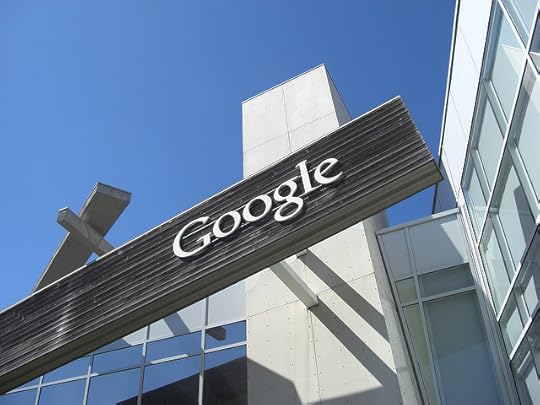
Google Secretly Expands Tech Empire Across the U.S., Getting Millions in Tax Breaks
by Ilana Novick

Google Is Making Billions at the Media's Expense
by Jacob Sugarman
Google Sets Record Straight on 'Location History' Setting
by
Yet these concerns, valid as they may be, ignore the crux of the matter. Project Nightingale isn’t a flaw to be corrected with incremental improvements in privacy law; it’s an indictment of privatized health care altogether.
To treat Project Nightingale as a product of failed privacy policy, and not of a for-profit health care system, is effectively to absolve Google and Ascension. Historically, digital-privacy regulations (or the threat of them) have come at virtually no expense to tech corporations.
Facebook, perhaps the most high-profile offender on privacy issues, has created a number of scandals for itself, from lying about users’ control over their data to funneling user information to the right-wing political consultancy firm Cambridge Analytica. The company’s penalty: minor privacy policy tweaks and a $5 billion Federal Trade Commission fine—slap-on-the-wrist caliber for a company worth over $550 billion. Meanwhile, Google’s privacy breaches—from nonconsensual location tracking to collection of data on minors—have incurred federal finger-wags and fines as paltry, relatively speaking, as $170 million. (Google’s market capitalization exceeds $900 billion.)
In the interest of staving off additional regulation, Facebook and Google have already begun to seize the privacy narrative. Last spring, Mark Zuckerberg unveiled a “privacy-focused” Facebook redesign including message encryption and ephemeral, rather than permanent, posts—changes that sound constructive while still permitting the company to profile users’ locations, ages, browsing habits and other traits in the name of targeted advertising. Similarly, Google CEO Sundar Pichai penned an op-ed for The New York Times in which he crowed about giving users the “choice” to control their privacy—trusting that the average Google user won’t pore over the minutiae of their privacy settings—and assured readers that data collection, somehow, benefits everyone. Not coincidentally, Facebook and Google have donated to major think tanks and nonprofits in a bid to influence privacy legislation.
Considering this, it’s difficult to envision HIPAA reining in a company like Google. When companies do violate HIPAA, the standard penalty, as in tech privacy violations, is a fine. In 2018, Beckers Hospital Review noted three “major” cases of HIPAA violations. Filefax, a defunct medical records management company, was fined $100 million for a 2015 data breach affecting 2,150 patients. Massachusetts company Fresenius Medical Care North America, part of an international network that boasted soaring profits in October, paid $3.5 million in the wake of five separate breaches. MD Anderson Cancer Center, a Texas hospital with revenues of $5.2 billion in 2018, paid $4.3 million in civil penalties for three breaches.
If Project Nightingale isn’t HIPAA compliant, as at least one whistleblower has warned, there’s too much evidence of corporate latitude in privacy law to believe Google and Ascension will be restricted in any meaningful way. If it is HIPAA compliant, as The Atlantic has argued, HIPAA will at best be faintly modified to account for digital medical processing, with no real impact on health care corporations.
In either case, the problem isn’t that Project Nightingale may have violated HIPAA, or that HIPAA is antiquated. It’s that, regardless of the form the legislation takes, HIPAA and other health-data laws will continue to be a plank in the legal framework that codifies health care as a business. As Mason Marks recently wrote for Slate, a bill proposed this year by Sens. Amy Klobuchar, D-Minn., and Lisa Murkowski, R-Alaska, said the Protecting Personal Health Data Act “actually creates a safe harbor for products that mine [predictive health data], including those that collect personal health data ‘derived solely from other information that is not personal health data.’”
Thus, even with full HIPAA and other legal adherence, corporations retain an incentive to work in tandem with hospitals and insurance companies in all sorts of data-centric capacities—hence Amazon, Apple and other tech firms’ hunger for a piece of the lucrative health care industry pie.
The only way to prevent the further monetization of health care data, then, is the complete removal of the profit motive from health care. Alphabet, Google’s parent company, reportedly plans to apply and sell AI to health insurance companies and has invested in health insurance companies Oscar, Clover, and Collected Health. Apple and Amazon are in close proximity to other insurance companies, likely seeking to convert data into expensive medical procedures. The antidote isn’t simply better laws; it’s a fully publicly funded, single-payer system.
This, of course, isn’t a new observation: Public support for single-payer health care is overwhelming, despite what many policymakers would have their constituents believe. And when a toothless HHS investigation of Project Nightingale is legislators’ idea of justice for medical patients, that support will only grow more robust.

Expect More Voting Machine Headaches in 2020
Still-incomplete explanations of problematic aspects of new voting systems that debuted in November 2019 and will be used in 2020 suggest that voters will likely see random delays in voting and vote counting during next year’s presidential primaries and fall election.
The new voting systems were being tested or deployed in advance of 2020. While the machinery did not widely fail across all jurisdictions, there were diverse and serious problems that could undermine public trust if they recur in 2020. However, the official responses, thus far, have not been reassuring.
Take Georgia, for example. There, new systems were tested in nine counties on November 5 before statewide use in 2020’s primaries. In four counties, the start of voting was delayed by more than one hour, according to a secretary of state summary that mostly blamed the users, but not the technology. The users would be poll workers and other officials (who underwent training) and private contractors who program the system checking in voters.
Related Articles
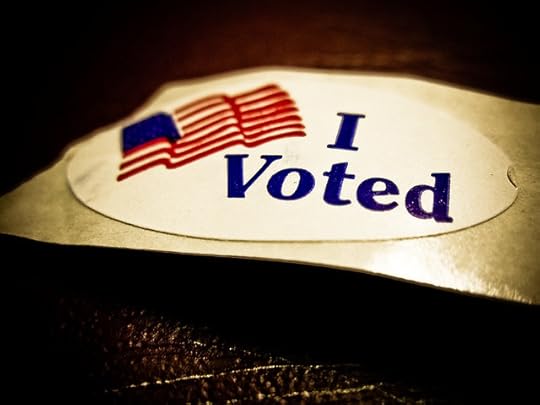
Just How Secure Are the 2020 Elections?
by
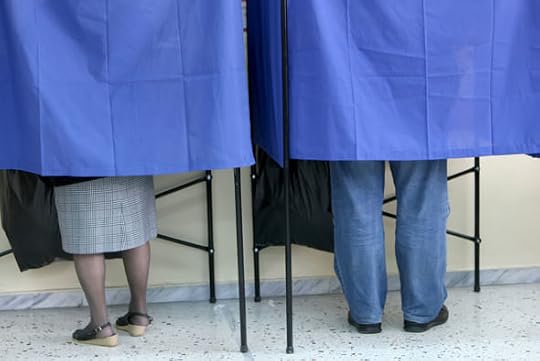
Is a Widely Adopted New Voting System Ready for 2020?
by

DNC Reverses Course on Virtual Voting in Two States
by
The opening of the polls is one of the busiest times at polling places, when people come to vote on their way to work.
“We had 45 incidents out of 27,482 votes or an incident rate of 0.164 percent,” the secretary of state’s report summary said. “Nearly all issues were caused by human error or interaction which can be mitigated through training or identified through testing.”
That statistical assessment is breezy. The report’s fine print describes poll openings delayed by an hour, but does not say how many voters were kept waiting. The apparent reason was that the electronic poll book system had “an additional field within the dataset erroneously.” If that analysis is correct, that is an amateur programming error. The report said that private vendors used Wi-Fi to access and reprogram it. But that wasn’t the only problem.
On Election Day, the heart of the new voting system, the touch screen balloting unit from Dominion, a voting system vendor, “rebooted”—or turned itself off and back on—“while [the] voter was at the touchscreen” in several precincts, the report said. In other examples given, a computerized card that is given to voters as they check in and tells the touch screen which ballot to bring up either didn’t work or caused voters to be “given incorrect ballots.”
Georgia arguably was the least voter-friendly state in 2018, as recounted by the sweeping federal lawsuit filed by allies of Democratic gubernatorial candidate Stacey Abrams that listed a catalog of bureaucratic hurdles and procedural snafus. While Abrams lost that race to Republican Secretary of State Brian Kemp, Georgia is seen as a potential 2020 swing state.
While it may be true that human-made programming and testing errors were to blame, what is clear is that the debut of a new system to be used statewide next year has technical bugs that will interfere at prime time with the voting process. The voter turnout in Georgia’s nine test counties was 15 percent or less. Next year it could easily quadruple in primaries and the fall election. The voting process, due to no fault of the voters, may be arduous, unpredictable and delay-filled.
Deeper Issues in Pennsylvania
Another 2020 swing state—and one that will be critical to the presidential election result—is Pennsylvania. There, a number of urban and suburban counties debuted the ExpressVote XL ballot-marking system from Elections Software and Systems (ES&S), which is the nation’s largest voting machine vendor. What unfolded in Northampton County and Philadelphia pointed to different issues where public explanations thus far have not explained what went wrong.
On November 5, there were problems with ES&S’s touch screens being either too sensitive, meaning that the slightest touch—or clothes or paper brushing by—registered unintended votes. There were other cases where the touch screens were not sufficiently sensitive and did not record votes despite voters firmly pressing the screen, said Citizens for Better Elections’ chief technologist Kevin Skoglund.
There were also problems with voters verifying ballots, he said. The ExpressVote XL prints a ballot summary card (the size of a sheet of legal paper folded in half) for the voter to review and approve before submitting it. But it presents that summary under a glass cover. Skoglund said that it was hard for voters to see because it used a small font size. The physical height and poor lighting in some polling places compounded that difficulty, he said.
“Those were the first problems that the voters were experiencing,” he said, before turning to problems that surfaced in Northampton County in eastern Pennsylvania.
“At the close of the polls, they realized they had a big problem,” Skoglund said. “That’s when they realized they had some races that had zero votes in them. And that’s unlikely in any contest but especially when you have straight party voting. You press one button and vote for all Democrats, for example. You expect that some people showed up and did that [voted straight party tickets].”
The absence of any recorded votes occurred in a half-dozen races where more than one political party nominates the same candidate—such as for judge.
“The only clue we have to go on so far is that every race where it happened and the only races where it happened were races where a candidate was cross-filed,” he said. “That means that a candidate was both on the ballot as a Democrat and as a Republican. You are allowed to do that in Pennsylvania.”
On election night, county officials scrambled to retrieve all of the printed ballot summary cards from the polls and brought them to one location. There they used other ES&S high-speed scanners (including some brought in from other counties and nearby New Jersey) to recount everything. They finished recounting before sunrise the next day. Since then, there has been much heat and little light.
Northampton County Executive Lamont McClure was unsparing in his criticism of ES&S—after spending several million dollars on the new machinery—starting with a press conference after being up all night. County officials have been waiting for ES&S to tell them why their wares failed. Some county council members and citizens have demanded refunds, although other local officials have defended ES&S and said the problems would be identified and solved.
McClure has not responded to Voting Booth’s request for comment.
“We don’t know” what happened, said Skoglund, “but my guess is it is a problem with the ES&S software. ES&S software did not handle that case correctly. The EAC [U.S. Election Assistance Commission, which certifies voting systems] didn’t test for it. The Department of State in Pennsylvania, they told someone I know that they didn’t test for it. And we know that Northampton didn’t test for it. So this case, where someone can be cross-filed, seems to have never been tested anywhere along the line.”
Skoglund and others have called on the state to decertify the ExpressVote XL—meaning it could not be used in 2020. On November 25, the Green Party filed a motion in federal court calling for that remedy, citing a settlement with the state following its incomplete and fraught 2016 presidential recount. The crux of the Green Party’s argument is the ES&S device uses barcode printouts to record and count votes, which cannot be read—and thus verified—by voters.
“This [ES&S] voting system—this all-in-one hybrid—is really problematic,” said Skoglund. “It is very questionable whether the touch screen registers the right vote. It’s questionable whether it prints the right thing. It’s questionable whether voters look at that and verify that it says the right thing before casting it. And now it’s questionable whether it counts those ballots correctly.”
Flawed Audits Too?
The Green Party’s legal challenge is part of a wider campaign by election transparency activists to use human-marked paper ballots as a basis for more trustable and verifiable elections—especially if post-Election Day challenges and recounts occur. However, the voting machine industry increasingly has pushed computer-printed ballot summaries as the new official election record. A computer printout removes the human element from ballot records, just as it removes the possibility for juries—in this case, local boards in challenges and recounts—to assess voter intent if ballots are sloppily marked (or misread by scanners).
States like Pennsylvania have tried to counter such criticisms by instituting a new form of vote-counting audit before the results are officially certified. Progressive election groups including Verified Voting, Common Cause and the Brennan Center at New York University Law School have promoted that process, called a risk-limiting audit (RLA). It uses a statistical method to estimate with 95 percent accuracy that the initially reported results are correct.
But while the state has recently touted its use of RLAs in the November 2019 election, local election integrity activists said that exercise in Philadelphia was a sham because the city maintained loose controls over its voted ballots.
As Rich Garella of Protect Our Vote Philly documented in a November 20 report that included photos that he took of unguarded and easily accessible boxes of ballots, one cannot estimate statistical accuracy if the inventory is incomplete, sloppy or questionable. (Garella literally walked into rooms with thousands of unvoted ballots in boxes near unlocked doors left piled on desks.)
“The Philadelphia Board of Elections failed to control blank ballot card inventory, failed to secure voting equipment and failed to guarantee the security of the voted ballots in the November 5 election,” his report began. “Therefore Thursday’s “risk-limiting audit” will not be able to confirm that the election results correctly reflect the intent of the voters.”
In other words, whether at the starting line of Election Day—opening the polls for people headed to work—or with the performance of new machines used by voters, or with the counting at the finish line in complex races, or in the results-auditing process, there are a series of new problems tied to new devices and protocols.
Whether these issues get addressed and solved before 2020’s high-stakes elections unfold is anybody’s guess. But if you look at the available signs this far, the forecast for 2020 is not exactly reassuring. At the very least, voters may randomly face all kinds of delays, which will not likely boost confidence in outcomes if their candidates or party doesn’t win.
This article was produced by Voting Booth , a project of the Independent Media Institute.
Steven Rosenfeld is the editor and chief correspondent of Voting Booth, a project of the Independent Media Institute. He has reported for National Public Radio, Marketplace, and Christian Science Monitor Radio, as well as a wide range of progressive publications including Salon, AlterNet, the American Prospect, and many others.

The Tax Records on Trump Tower Don’t Add Up
ProPublica is a nonprofit newsroom that investigates abuses of power. Sign up to receive our biggest stories as soon as they’re published.
Donald Trump’s business reported conflicting information about a key metric to New York City property tax officials and a lender who arranged financing for his signature building, Trump Tower in Manhattan, according to tax and loan documents obtained by ProPublica. The findings add a third major Trump property to two for which ProPublica revealed similar discrepancies last month.
In the latest case, the occupancy rate of the Trump Tower’s commercial space was listed, over three consecutive years, as 11, 16 and 16 percentage points higher in filings to a lender than in reports to city tax officials, records show.
Related Articles

Trump's Latest Handout to His Rich Buddies Is Unbelievable
by

Yet Another Trump Tax Scam Has Been Exposed
by

Never-Before-Seen Trump Tax Documents Show Major Inconsistencies
by
For example, as of December 2011 and June 2012, respectively, Trump’s business told the lender that 99% and 98.7% of the tower’s commercial space was occupied, according to a prospectus for the loan. The figures were taken from “borrower financials,” the prospectus stated.
In tax filings, however, Trump’s business said the building’s occupancy was 83% in January 2012 and the same a year later. The 16 percentage point gap between the loan and tax filings is a “very significant difference,” said Susan Mancuso, an attorney who specializes in New York property tax.
A spokesperson for the Trump Organization said that “comparing the various reports is comparing apples to oranges” because reporting requirements differ.
Trump had much to gain by showing a high occupancy rate to lenders in 2012: He refinanced his share of Trump Tower that year and obtained a $100 million loan on favorable terms.
The vast majority of the gap between occupancy figures could be explained by diverging reports on how much space the Trump Organization used in Trump Tower. In loan documents, the company said it and its affiliates occupied 74,900 square feet in mid-2012, or 31% of the building. But tax reports from the January before and after listed the company and related parties as occupying 41,600 square feet — or about 18% of the tower.
“I cannot give you an explanation,” said Kevin Riordan, a financing expert, former accountant and real estate professor at Montclair State University who reviewed the tax and loan records for Trump Tower at ProPublica’s request.
More than a dozen tax and finance experts, presented with ProPublica’s earlier findings, also said they could not decipher a reason for the differences. As with Trump Tower, the discrepancies made the two properties — a skyscraper located at 40 Wall Street and the Trump International Hotel and Tower near Columbus Circle — appear more profitable to the lender and less so to property tax officials.
Those discrepancies were “versions of fraud,” according to Nancy Wallace, a professor of finance and real estate at the Haas School of Business at the University of California-Berkeley. The penalties for false filings can include fines or criminal charges.
The diverging numbers match a pattern described by Michael Cohen, Trump’s former lawyer, in congressional testimony this year. Cohen said Trump at times inflated assets’ value in documents submitted to lenders in an effort to secure loans. In reports to tax officials, Cohen testified, Trump would lower the value to reduce what he owed.
The focus on Trump’s business and personal financial records has been particularly intense of late. Manhattan District Attorney Cyrus Vance Jr. has subpoenaed a wide array of Trump financial records to investigate claims that the Trump Organization falsified records of hush-money payments to pornographic film actress Stormy Daniels, who said she and Trump had a sexual encounter. (He has denied the affair.)
Congressional lawmakers are seeking Trump’s personal tax returns, as well as other financial information, as part of their investigation into potential foreign influence on the presidency. Two federal courts have affirmed lawmakers’ right to enforce the subpoenas, and Trump has appealed to the U.S. Supreme Court.
ProPublica used New York’s Freedom of Information Law to obtain property tax filings for four of Trump’s Manhattan buildings, including Trump Tower. The income and expense statements Trump filed when repeatedly appealing the city’s valuation of his property are public under the law. We then compared information in the tax reports to loan data made public when Trump’s debt became part of pools of loans sold publicly as bonds known as commercial mortgage-backed securities.
Information in tax and loan filings can differ for legitimate reasons, experts said. A small portion of the occupancy gap at Trump Tower did appear to have an explanation: About 2.5 percentage points of the discrepancy in 2012 consisted of an instance where the Trump Organization treated newly leased, but still empty, space as full in its loan documents (which Trump’s lender disclosed) but not in tax documents.
The Trump Organization refinanced Trump Tower in 2012, replacing its existing $27 million in debt with a loan for $100 million. That allowed Trump to extract about $68 million in cash. The same institution that handled the refinancing, Ladder Capital, refinanced 40 Wall Street and the Columbus Circle property a few years later.
Occupancy, along with cash flow, is a factor used by lenders and ratings agencies to assess the riskiness of a loan. Trump secured relatively favorable terms: an interest-only loan that allowed him to avoid paying monthly principal. The Trump Tower loan received coveted AAA and Aaa ratings, respectively, from credit agencies Fitch and Moody’s. (The company has continued making payments.)
When it comes to reporting property taxes in New York City, there’s a potential incentive for owners to minimize how much space they’re renting to themselves. The city’s Tax Commission, which handles property tax appeals, tends to treat owner-occupied space as if it’s being rented at full market price, which increases the value the tax commission assigns to the building, and thus increases the tax bill. But the commission often won’t assign such income to vacant space, said Mancuso, the New York property tax expert.
The Trump Tower filings showed smaller discrepancies when it came to income. (New York City assessors consider income when calculating the taxable value of commercial properties, making New York property tax filings resemble those of income taxes more than property tax filings typically do in other parts of the country.)
Trump Tower, however, fell shy of expectations for profit set out by underwriters working for Ladder Capital during the refinancing, tax and loan records show. They had pegged net operating income at roughly $20.4 million a year. In the years after the loan was made, the building hasn’t come close.
New York City real estate observers have suggested that the tight security needed at the tower because of the presidency has cut into Trump’s ability to make money from the building. This year, China’s biggest bank, Industrial & Commercial Bank of China, made plans to reduce its space in Trump Tower when its lease ran out, according to Bloomberg News.
The financial institution that arranged the Trump Tower refinancing, Ladder Capital, is a publicly traded real estate investment trust that reports more than $6 billion in assets. It has a close Trump connection: Jack Weisselberg, an executive in loan origination, is the son of the Trump Organization’s longtime chief financial officer, Allen Weisselberg. Allen Weisselberg is under investigation by the Manhattan DA for his role in the Daniels payments.
Ladder Capital declined to comment.
Doris Burke contributed reporting.

Chris Hedges's Blog
- Chris Hedges's profile
- 1921 followers




